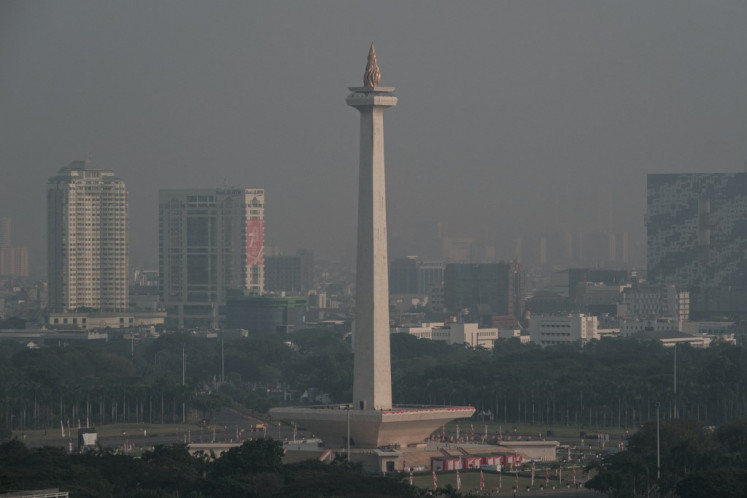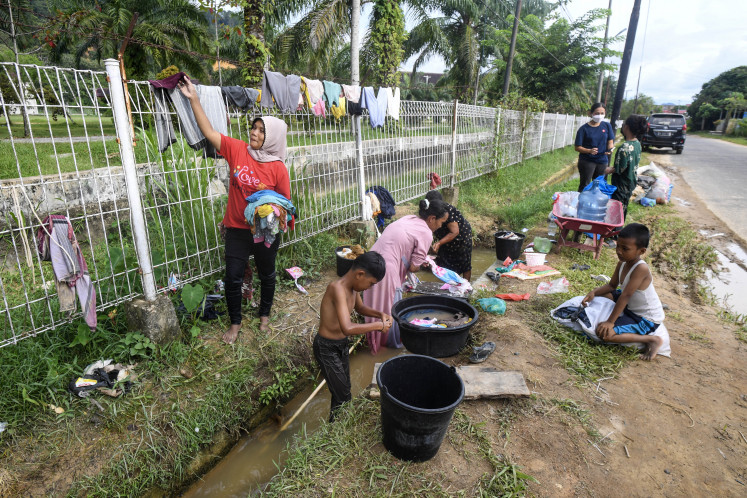Popular Reads
Top Results
Can't find what you're looking for?
View all search resultsPopular Reads
Top Results
Can't find what you're looking for?
View all search resultsAmpera bridge more than a city symbol
The Ampera Bridge, located in the South Sumatra capital of Palembang, is not only a landmark but also reflects the nation’s political aspirations
Change text size
Gift Premium Articles
to Anyone
T
he Ampera Bridge, located in the South Sumatra capital of Palembang, is not only a landmark but also reflects the nation’s political aspirations.
The idea to establish the bridge came from Palembang’s colonial era major Le Cocq de Ville. His vision was to unite the city by connecting two areas of Palembang that were divided by the Musi River.
Le Cocq’s idea remained unrealized until the Dutch lost their grasp on Indonesia. Gradually, the initiative to build the bridge reemerged when Palembang’s transitional legislative council decided to allocate a budget for its construction in October 1956.
A year later, construction began with a US$4.5 million (then Rp 9 billion) budget allocated, gained from the spoils of war when the country fought against Japan. Later the plan was also supported by founding father Sukarno.
The bridge, which was finished within three years, was once considered the longest bridge in Southeast Asia.
“In the beginning the bridge was called the Bung Karno bridge to honor the former president’s support for building it,” Palembang native sociologist Saudi Berlian said.
Saudi said that during the country’s referendum era, people started to call the bridge “Musi”, due to it crossing over the Musi River.
In 1966, amid political turmoil and strong anti-Sukarno sentiment, the bridge’s name was changed to “Ampera”, which stands for “Amanat Penderitaan Rakyat” (Mandate of People’s Suffering).
Urban legend says that the bridge has always been a symbol that represents the ruling authority.
“Back then, when the Golkar Party ruled the country, the bridge was painted yellow [Golkar Party’s color] and when it was the Indonesian Democratic Party of Struggle’s [PDI-P] turn to rule, it was painted red,” Palembang local citizen Djamil, 38, said.
He said that only during Susilo Bambang Yudhoyono’s presidential era [Democratic Party blue] did the bridge remain painted red.
“But maybe it is because the current Palembang governor is still from the same party [PDI-P],” he added.
In 2002, the idea was circulated to change the bridge’s name back to “Bung Karno” but it was not supported by the local government and citizens.
The two towered bridge once had a retractable section, which could be lifted to make way for tall ships to sail through the river.
The section was powered by a 500-ton pendulum ballast lifter, which could lift the bridge to fully make way for ships, a process that took 30 minutes to complete.
However, since 1970, this section was no longer allowed to operate because of the time consuming process that was deemed to be obstructing traffic. In 1990, both pendulum ballasts were detached from the bridge.
Today, the people of Palembang use the areas at both sides of the river for recreational activities. Good facilities are also located at the nearby old fortress of Besak.
“The area has attracted more people, because it is well arranged now, while previously the place looked dilapidated,” Djamil a Palembang citizen said. (rpt)










